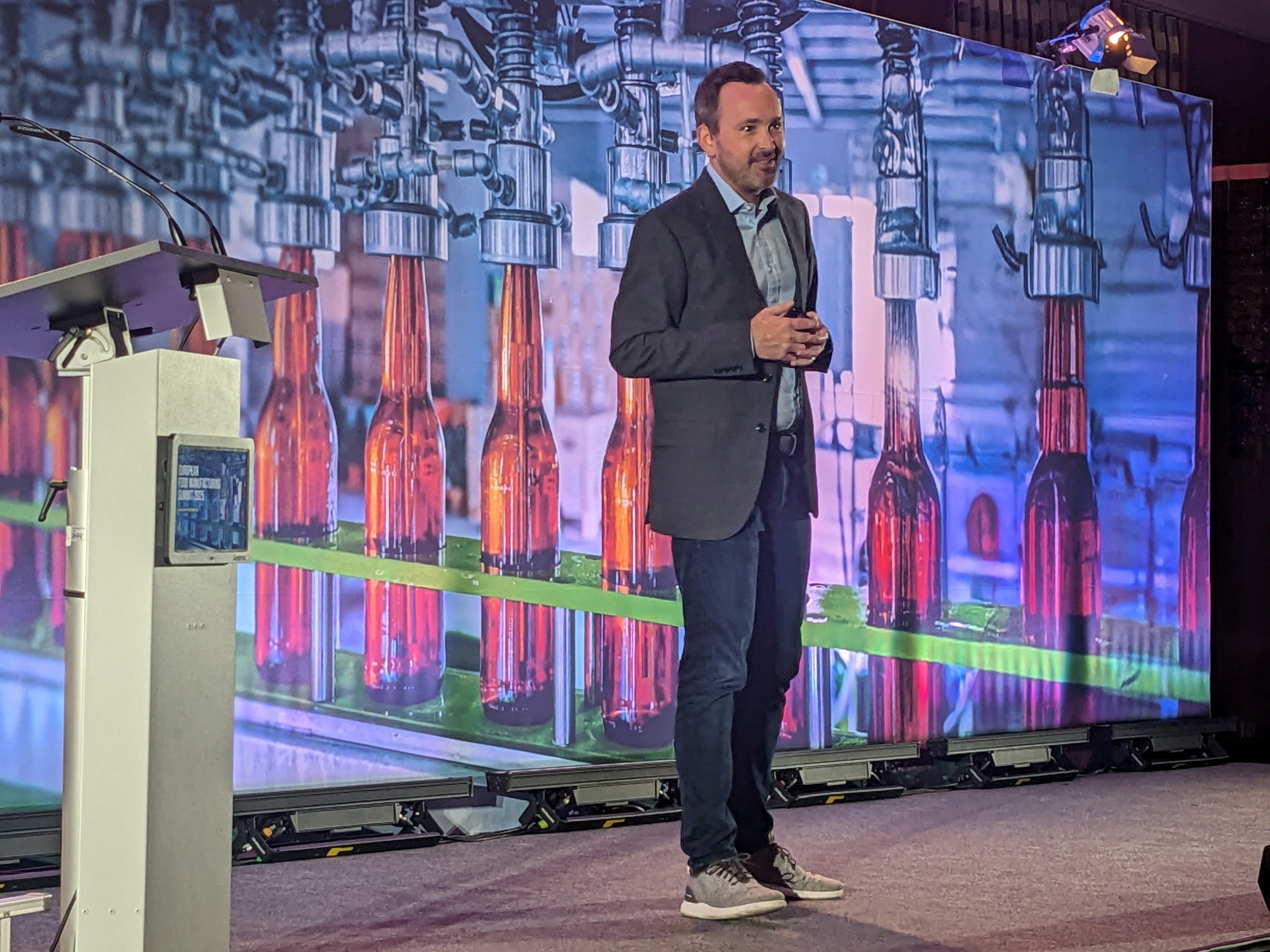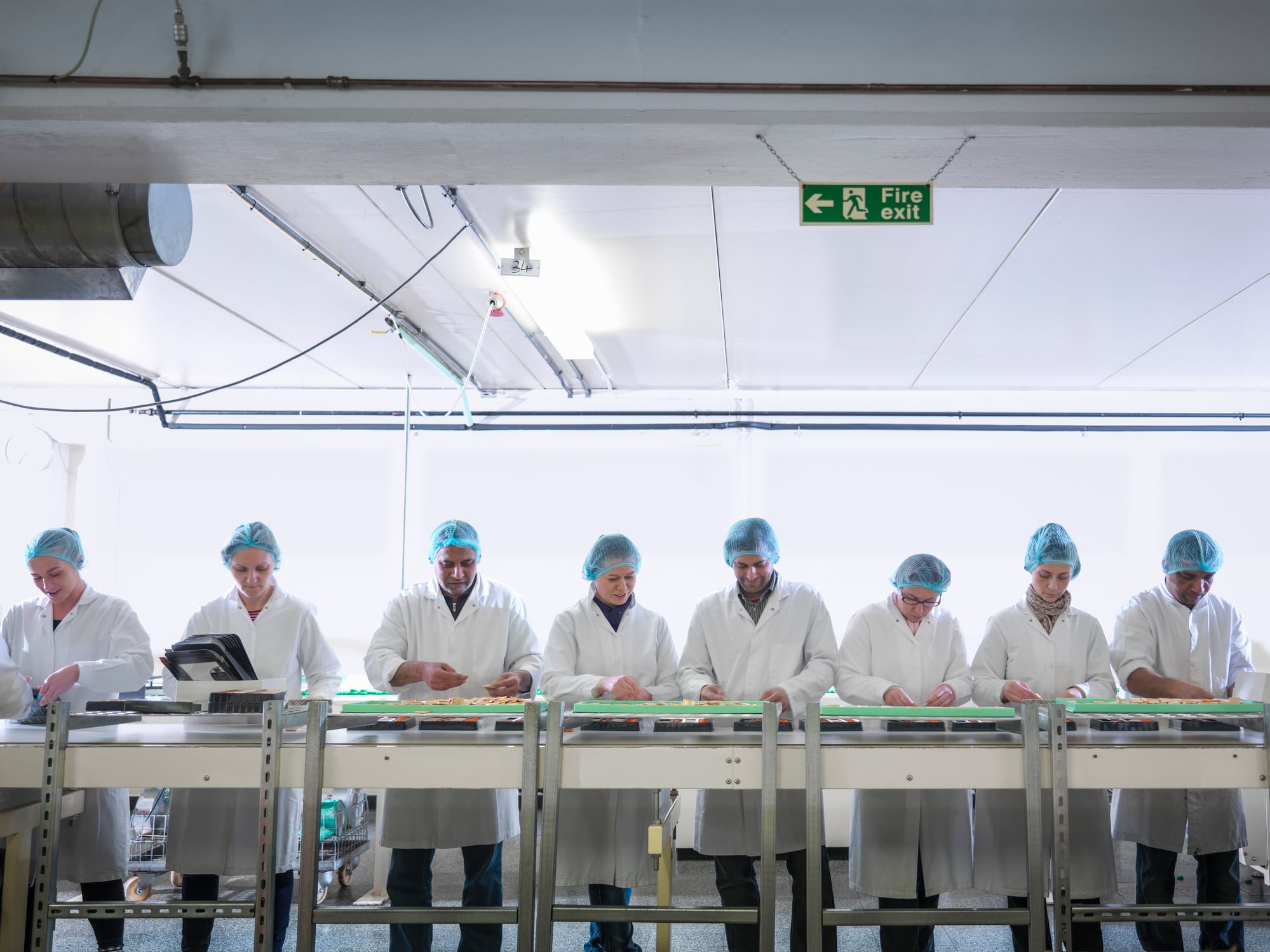Last week I chaired the European Food Manufacturing Summit in Dusseldorf. The two-day event brought together a range of figureheads from food and drink, with topics including talent and retention, and data and AI.
One of the key takeaways from the conference was how the role of leadership is changing, with David Cutter, chief supply chain and R&D officer at FrieslandCampina, describing a model wherein the shop floor is considered the “most important” - over the leadership team.
“I’m happy to say: ‘I’m the least important person in our supply chain’,” Cutter said.
The idea behind this approach is not only to generate a workplace in which the team feel empowered to suggest solutions, but also feel safe to do so.
Cutter explained that Friesland had previously had a culture where mistakes were not raised – instead it was just a case of quickly and quietly fixing it yourself.
Such hesitancy can be created when trust is not embedded into the fabric of a company, with employees fearful that admitting a mistake or gap in their knowledge could lead to assumptions around their competency. The problem with that mentality it makes the business vulnerable to bigger risks and leaves teams feel undervalued and unmotivated.
For Friesland, altering this way of thinking was a big challenge.
“We had to create a new mindset of: ‘It’s ok if something is wrong’.”
To drive that level of trust among employees where it does feel safe to ask for help, leaders must shift away from accusatory statements (or at least the perception that that will be the reaction) to probing and supporting questions like: ‘You have a problem – ok, so what can I do to help?’
Working in silos: ‘We were going to ship air’
During its culture shake-up, Cutter said it became apparent that many of Friesland’s bottlenecks were a result of siloed departments.
“We had 7-8 different departments that all had their own business strategy, all with their own way of working,” he said.
This was a similar issue raised by HelloFresh’s Matt Cicinelli – vice president for US operations and global supply chain – who gave the example of how disjointed working resulted in a raft of complaints for Factor – a Chicago meal kit business the group acquired in 2022.
“Everyone was acting independently from their up/downstream customer. Because of that we often misplaced things,” he shared during his presentation.
“We picked up a box in one of the factories and [discovered] it had zero product in it – we were going to ship air.”
Like Cutter, Cicinelli said everyone in the team had “their best way” of working. Moreover, the business didn’t have any historical data to inform their direction; with Factor previously using a web of spreadsheets that were overwritten on a weekly basis.
“We couldn’t tell where the problem was. In the end it was bad customer experience,” Cicinelli added.
How did they solve it?
Hello Fresh - Start with the basics
For Factor, Cicinelli said the solution was to start with the basics.
“We trained leadership on basic lean tools to stabilise and improve, [on] value stream mapping, overall equipment effectiveness, floor engagement.”
The next step was looking at workplace culture. Cicinelli explained that the team spent a lot of time on the floor to figure out what was needed to address the bottlenecks. Once these were established, the business found champions that had been with Factor pre Hello Fresh acquisition, allowing the once siloed teams to feel part of the wider group.
Work is still underway to get the business to an ideal point, but Cicinelli underscored six quick wins it rolled out:
- Fundamental shift from batch production of 5+ runs/week to 2 runs/week
- Established ‘Gemba Walks’ to gain direct floor observation and feedback from the process ad hourly team
- Deploying visual controls and 5S mechanisms (sort, set in order, shine (i.e. clean/inspect), standardise, sustain) to guide material across building
- Visual standards for over and under producing product
- Work in progress controls in queues to ensure not overstaging (i.e. don’t make 150 racks of raw goods when only 50 an hour are needed)
- Aligned shipping schedule to cooking schedule to ensure producing ‘just in time’.
Longer-term change is already in motion too – with the business focused on establishing a place to house all its production data.
“We came up with a planning tool to determine the right amount to produce on the right day and moved from a push to pull model.”
Version one of this plan is pretty much completed, with version two set to look at how the business can use AI to drive further efficiencies and improvement.
But overall, Cicinelli said it was about changing the business’ outlook from “I can’t it’s hard’, to a problem-solving mindset”.
In the period of one year following on from this strategy, Factor has seen its safety incidences reduce 55%, customer shortages move from 16k a week to zero, food waste reduce by 75%, labour efficiencies improve in the kitchen by 10% and fulfilment by 27%, and equipment utilisation move from 30% to 82%.
FrieslandCampina - It’s ok to fail
For Friesland, its solution started with a unified vision – a strategy it calls ‘our way of working’ which was kicked off in March 2023 and has now being launched in more than 40 of its sites.
The strategy focused on several core principles:
- Not letting consultants take over
Whilst the business is not opposed to help and does use outside consultancies, Cutter said it’s important to remember that you own your strategy and you need to drive its direction. Whilst this may be harder work, it’s worth having this ownership.
- Aim higher
Previously the business had been budget focused rather than ambition focused, so Friesland started setting “very big targets” with the mindset that “it’s ok to miss them”.
- Brutal on standards/one consistent way
The business is completely standardised, as Cutter explained: “Everything is done the same across the global sites – same meetings, same score cards, same KPIs (with a few nuances). It doesn’t matter where you are.”
The idea being that if you do it in a similar way it’s much easier for everyone. And if it’s discovered you’re veering from that path, support will be given till you’re back aligned with everyone else.
- Red = good.
The business has removed ‘the yellow’ on its progress tracker – i.e. the neutral option.
The problem is that sitting on the fence doesn’t tell you much about the business and what action is needed. As Cutter explained: “No one was good at showing red, everyone was sat in yellow – but it’s either on track or off track.”
Taking this option out was “one of the hardest things” the business has done, Cutter admitted.
“Naturally, people want to do the right thing and improve, but they don’t want to admit mistake.”
But for the business it was about transforming the connotations of red equals danger and incompetency to red equals acknowledgement and action.





